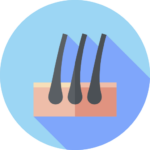The change of seasons brings with it an array of natural beauty, from blooming flowers in the spring to vibrant foliage in the fall. However, for many, these seasonal transitions also usher in an unwelcome guest: seasonal allergies. In this blog, we’ll delve into the world of seasonal allergies, discussing what they are, common triggers, symptoms, prevention, and effective treatment options.
Understanding Seasonal Allergies
Seasonal allergies, also known as hay fever or allergic rhinitis, are immune system reactions to airborne substances like pollen from trees, grasses, and weeds. These allergens trigger an immune response in sensitive individuals, resulting in symptoms that can range from mildly annoying to significantly disruptive.
Common Seasonal Allergy Triggers
- Pollen: Trees, grasses, and weeds release tiny pollen grains into the air during specific seasons. Depending on the plant, this can happen in the spring, summer, or fall.
- Mold Spores: Outdoor molds thrive in damp conditions, often appearing in piles of rotting leaves or moist soil. Their spores become airborne and can trigger allergies.
- Dust Mites: These microscopic creatures are prevalent year-round but can exacerbate allergies during periods when people spend more time indoors.
- Pet Dander: While not seasonal in the traditional sense, spending more time indoors during extreme weather can lead to increased exposure to pet dander, a common allergen.
Symptoms of Seasonal Allergies
Seasonal allergy symptoms can vary widely but often include:
- Sneezing
- Runny or stuffy nose
- Itchy or watery eyes
- Scratchy throat
- Coughing
- Fatigue
In severe cases, allergies can lead to symptoms such as sinus congestion, headaches, and even asthma exacerbations.
Prevention Strategies
While it’s challenging to entirely avoid allergens, these strategies can help minimize exposure and reduce symptoms:
- Monitor Pollen Counts: Check local pollen counts regularly, and try to stay indoors on days with high pollen levels.
- Keep Windows Closed: Keep windows and doors closed to prevent allergens from entering your home.
- Use Air Purifiers: High-efficiency particulate air (HEPA) filters can help remove allergens from indoor air.
- Shower and Change Clothes: After spending time outdoors, shower and change your clothes to remove pollen and other allergens.
- Limit Outdoor Activities: If pollen counts are high, limit outdoor activities or wear a pollen mask when working outside.
Treatment Options
Several treatment options can help alleviate seasonal allergy symptoms:
- Antihistamines: Over-the-counter or prescription antihistamines like Allegra, Claritin, or Zyrtec can relieve sneezing, itching, and runny nose.
- Nasal Corticosteroids: These prescription medications can reduce inflammation in the nasal passages and relieve congestion.
- Decongestants: Over-the-counter or prescription decongestants can temporarily relieve nasal congestion but should be used with caution due to potential side effects.
- Immunotherapy: Allergy shots or sublingual tablets may be recommended for individuals with severe allergies who do not respond well to other treatments.
Conclusion
Seasonal allergies can be a challenging and uncomfortable part of life for many people, but they are manageable. By understanding your allergy triggers, taking preventive measures, and considering the various treatment options available, you can enjoy the beauty of each season without the constant sneezing and itching. If you suspect you have seasonal allergies, consult with an allergist or healthcare provider to develop a personalized treatment plan that suits your needs and lifestyle. With the right approach, you can make seasonal allergies a minor inconvenience rather than a major disruption to your life.
We recommend Allegra Cheap generic Drugs Online if you have allergic rhinitis












